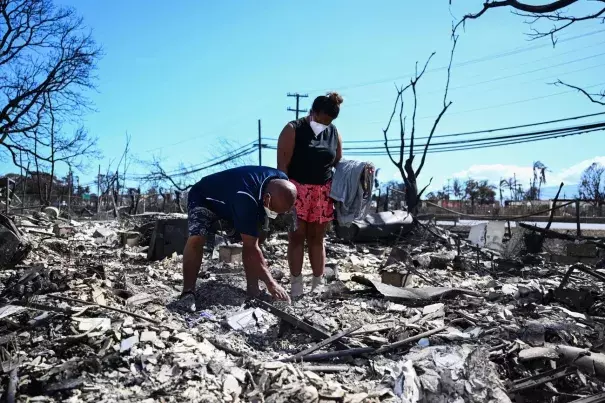As Smoke Clears, Toll Of Horrific Maui Fires Grows

The wildfires blazing across Maui have killed at least 96 people and destroyed more than 2,700 buildings in and the historic, pre-colonial city of Lahaina. The fire that incinerated Lahaina is already the deadliest in the U.S. in more than 100 years, and the official death toll is all-but-certain to grow. Officials also warn the fires will leave behind a toxic cloud of particulate pollution. The science of how climate change exacerbates wildfires in Hawaii is not as developed as it is the the western contiguous U.S. However, flash droughts have desiccated Maui this year and Hurricane Dora set off "unusually strong trade winds," National Weather Service meteorologist Genki Kino told the AP, which helped drive the fires. Climate change is "leading to these unpredictable or unforeseen combinations that we’re seeing right now and that are fueling this extreme fire weather,” Kelsey Copes-Gerbitz of University of British Columbia’s faculty of forestry, told the AP. “What these ... catastrophic wildfire disasters are revealing is that nowhere is immune to the issue.”
(Death toll: NPR, AP, The Guardian, CNN, AP, The Independent, Washington Post $, AP VIDEO; Lahaina: Honolulu Star Advertiser, Democracy Now, LA Times $, The Guardian; Climate change and add'l factors: AP, Inside Climate News, The Verge, The Guardian, Washington Post $, LA Times $, New York Times $, Vox, Bloomberg $, The Hill, New York Times $; Toxic smoke: AP, Washington Post $)
To receive climate stories like this in your inbox daily click here to sign up for the Hot News Newsletter from Climate Nexus:


